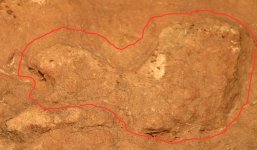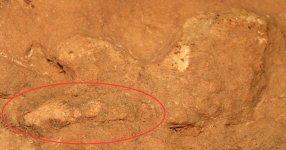White Heart
Full Member
- Sep 5, 2017
- 176
- 534
- Primary Interest:
- All Treasure Hunting
I found this rock with carving on it.
I now think it is a fired object, i.e. man-made rock.
The figures were created before firing, the geometric shapes were chiseled after firing.
I welcome feed back on the meaning of this carving.
The "snapper" is about 3 inches long.
I now think it is a fired object, i.e. man-made rock.
The figures were created before firing, the geometric shapes were chiseled after firing.
I welcome feed back on the meaning of this carving.
The "snapper" is about 3 inches long.












